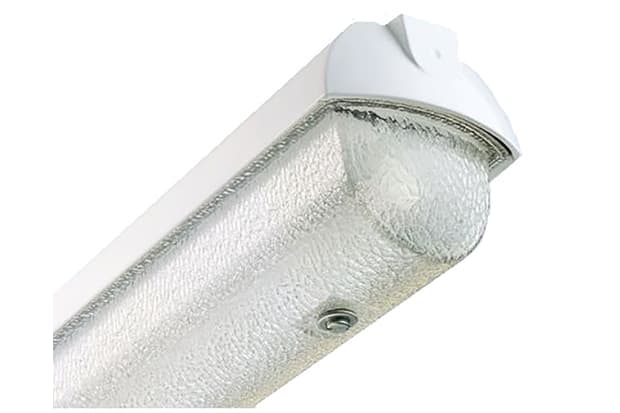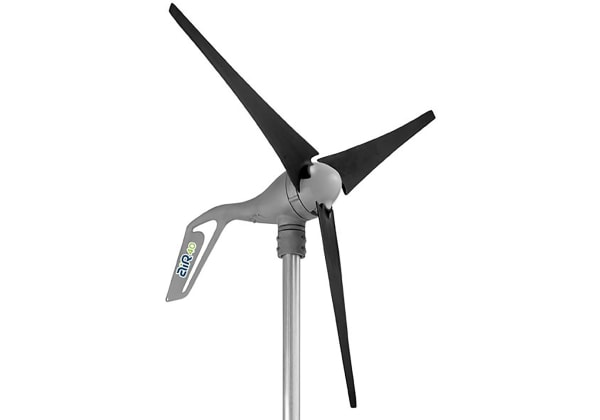- Published 25 Jan 2024
- Last Modified 8 Oct 2025
- 6 min
Switching to Efficient Industrial Lighting
Industrial lighting systems tend to be large and energy-intensive. Switching to lower-energy LED lighting can save money and cut carbon emissions. If you’d like to make your plant greener and cheaper to run, read on.


Reviewed by Stephen Bettles, Technical Support Engineer (December 2023)
Manufacturing environments and other industrial facilities like chemical plants and refineries need to be well-lit. A brightly lit workplace can make it easier for workers to perform their jobs effectively. Good lighting is also essential for health and safety because it can help to identify hazards in the workplace.
However, lighting a large factory space can be prohibitively expensive. That’s why engineers need to consider energy efficiency when lighting a workplace. This is where solutions such as industrial LED lighting can help.
Planning for Energy Efficiency
If you’re planning an industrial lighting system from scratch, you need to consider the ceiling height first. Most industrial facilities have much higher ceilings than other businesses. This means it’s important to consider the amount of light you need to generate to make the workspace safe, which is measured in recommended lumens per square foot. You need to factor in the amount of natural light (if any) that is available to the facility.
Taller ceilings will require more lumens to light the space to the required standard. You might also want to consider smart lighting solutions such as lighting on timers, dimmer switches, and sensors that turn lights off when no one is in the area. These all help to improve energy efficiency of your industrial lighting system.
If your lighting system is in place, consider introducing more energy-efficient bulbs or replacing industrial lighting fixtures with smart lights.
Energy Efficiency Rating
In March 2023, a new system for rating the energy efficiency of LED bulbs came into play in the UK. The change was prompted by new EU regulations for energy-efficient lighting that have also been adopted in the Government’s Ecodesign for Energy-Related Products and Energy Information Regulations 2021/2022.
These regulations are designed to encourage lighting manufacturers to continue to improve the efficiency of LED lights and assist lighting users in choosing the most efficient LED lighting systems on the market. The new regulations were necessary as the old system for grading the energy efficiency of LED bulbs had become outmoded.
As technology advanced, most of the new bulbs on the market were attaining an A, A+, or A++ rating. Rather than add to the A ratings, the new system takes bulbs that were A-rated and gives them an F or G rating. The onus is now on manufacturers to develop bulbs that are even more efficient to attain higher energy-efficiency ratings, on a scale from A to G.
The new labels effectively ‘raise the bar’ for LED lighting because relatively few light bulbs on the market will be rated A, says the Government.
Types of Lighting
Older types of lighting are being replaced with more energy-efficient versions both domestically and in industrial settings. Types of industrial lighting include:
- Incandescent lighting. This is the oldest type of light bulb. It works by heating a filament to produce light but wastes a lot of energy as heat. Only about a fifth to a tenth of the energy used by incandescent bulbs produces light.
- Halogen lamps. A British ban on halogen lamps came into place in 2021 following the gradual phasing out of sales from 2018. Although halogen lamps are more efficient than incandescent bulbs, they are much less efficient than newer technologies such as LED lighting.
- Fluorescent lighting. The Government is phasing out the sale of high-energy fluorescent bulbs. They are more efficient than incandescent lighting but less efficient than LEDs.
- LED lighting. Advantages of LED lighting include that it consumes about a quarter of the energy of incandescent lighting and its bulbs last much longer than incandescent bulbs. LED light bulb sales are expected to account for 85% of light bulb sales in the UK by 2030.
The Government says measures to ban halogen and phase out fluorescent lighting will save 1.26 million tonnes of carbon being emitted every year. That is the equivalent of removing more than 500,000 cars from the road.
Advantages of Efficient Lighting
Here are some of the advantages of energy-efficient lighting:
Energy Savings
Replacing incandescent or fluorescent lighting with LED lighting can cut the amount of energy your facility uses. The more efficient the LED lighting, the greater the savings, and some LEDs have an efficiency improvement of as much as 90%. This has the dual advantages of cutting emissions of carbon and saving money on electricity bills.
More Light, Less Heat
LEDs give out a much smaller amount of heat compared to incandescent bulbs. Incandescent lamps convert most of the energy they consume (as much as 95%) into heat. By contrast, LEDs can convert about 40% of their energy into light and 60% into heat. This makes them less of a fire risk.
Maintenance Advantages
Because LED lighting produces less heat, it is also less likely to burn workers when it is replaced. LED lighting is also more durable and has greater longevity than incandescent lighting. This means it needs to be replaced a lot less often. A high-quality LED bulb may last for about 50,000 hours, compared to 1,500 hours for an incandescent version.
Energy-Efficient Lighting Products
There is a wide range of energy-efficient lighting products on the market. LED lighting works by using a semiconductor that changes electricity into light. It is the most energy-efficient solution for industrial lighting. Whether you are replacing incandescent bulbs as part of a retrofit or designing a new smart lighting system, LEDs are a great option for reducing energy consumption and bills.
Industrial Lighting Fixtures
Factories need a lot of light. Industrial lighting features lighting fixtures for industrial units such as storage spaces, warehouses, and factories. There is some overlap with commercial lighting (lighting for retailers and offices), but industrial lighting fixtures tend to be more rugged, capable of withstanding harsh environments, and designed for a lot of usage.
Energy-efficient industrial lighting fixtures include LED panels, high bay lighting, and LED battens, which mimic the shape of traditional fluorescent lighting solutions. Once LEDs have been installed, it will be years before they need to be replaced. RS also stocks machine lights for accurate visual inspection of machines and instruments. They provide exceptional brightness for carrying out detailed work.
Smart Lights
Smart lights feature energy-efficient lighting combined with advanced control features such as automated lights that switch on and off thanks to sensors that detect motion, helping save energy.
Smart lighting provides a highly customisable way of illuminating an industrial facility and enables LED lighting systems to be controlled using a smartphone or iPad. Remote control of lighting means wall switches are no longer required. Smart lighting systems can also illuminate a building according to a schedule determined by the user.
When combined with sensor technology, smart lighting is a great way of reducing lighting costs and the impact of lighting a large space on the environment.
Retrofit Lighting
Industrial lighting fixtures can often be retrofitted to existing systems, so there is no need to completely strip out the original solution. Instead, the existing body of the luminaire – the complete electric light unit – is fitted with LED lighting.
Replacing a fixture completely often requires additional wiring and changes to a factory building. Retrofitting LED lighting can be much cheaper and less time-consuming than installing a new lighting system from scratch.
According to some estimates, light fixtures account for as much as 5% of global CO2 emissions. If manufacturers which use a lot of lighting switch to LED versions of industrial lights en masse, significant reductions in greenhouse gas emissions are possible. Not only that, their energy bills will be slashed, making manufacturing facilities more cost-effective and efficient.
Did you know RS carries a wide range of industrial lighting and industrial lighting fixtures? Check out some of our products here.
Related Articles
Related links
- Maintaining Energy Efficiency in Industry
- The Complete Guide to Industrial High Bay Lighting
- RS Energy Management Solutions
- Operational Efficiency Measurements: Efficiency of Fossil Fuels vs Renewable Energy
- Energy Efficiencies of Solar Panels and Solar Cells
- Home Appliance Solutions from Infineon | RS
- Powering efficiency
- Building technology from Siemens at RS


